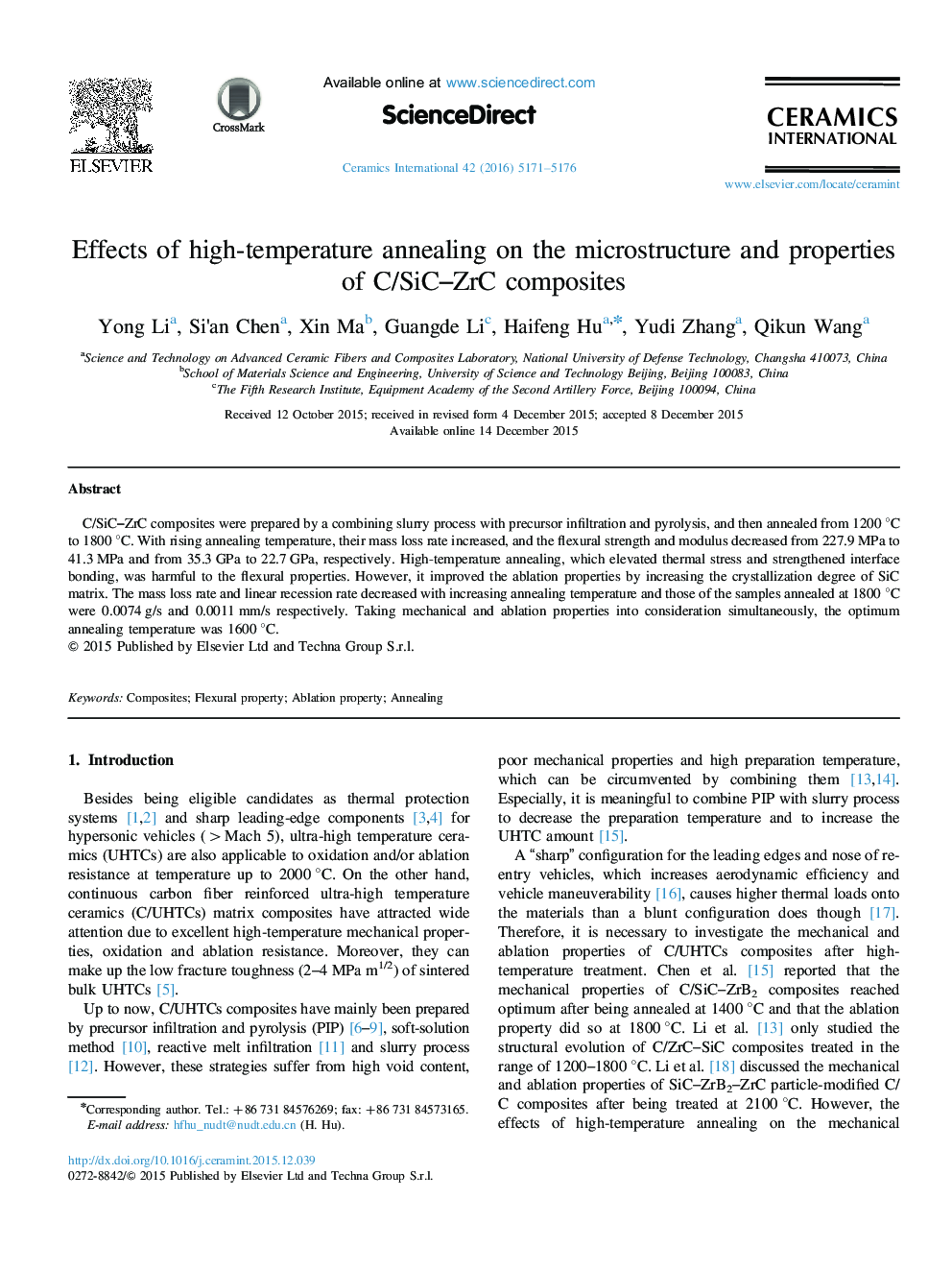| Article ID | Journal | Published Year | Pages | File Type |
|---|---|---|---|---|
| 10624394 | Ceramics International | 2016 | 6 Pages |
Abstract
C/SiC-ZrC composites were prepared by a combining slurry process with precursor infiltration and pyrolysis, and then annealed from 1200 °C to 1800 °C. With rising annealing temperature, their mass loss rate increased, and the flexural strength and modulus decreased from 227.9 MPa to 41.3 MPa and from 35.3 GPa to 22.7 GPa, respectively. High-temperature annealing, which elevated thermal stress and strengthened interface bonding, was harmful to the flexural properties. However, it improved the ablation properties by increasing the crystallization degree of SiC matrix. The mass loss rate and linear recession rate decreased with increasing annealing temperature and those of the samples annealed at 1800 °C were 0.0074 g/s and 0.0011 mm/s respectively. Taking mechanical and ablation properties into consideration simultaneously, the optimum annealing temperature was 1600 °C.
Related Topics
Physical Sciences and Engineering
Materials Science
Ceramics and Composites
Authors
Yong Li, Si׳an Chen, Xin Ma, Guangde Li, Haifeng Hu, Yudi Zhang, Qikun Wang,
